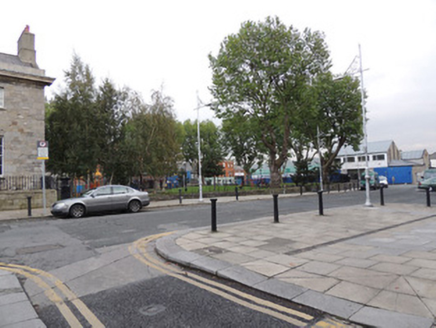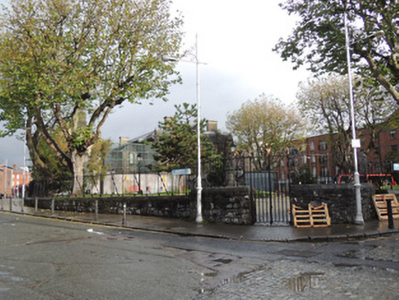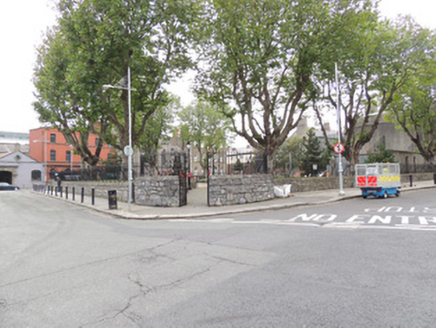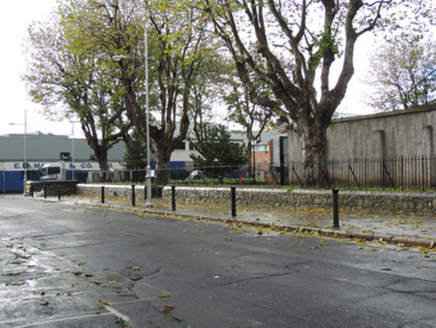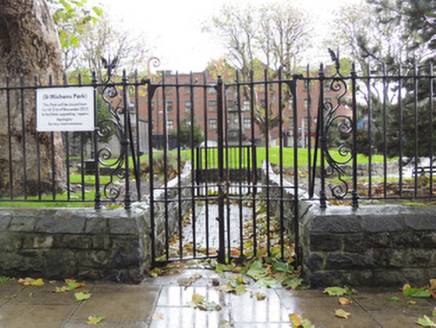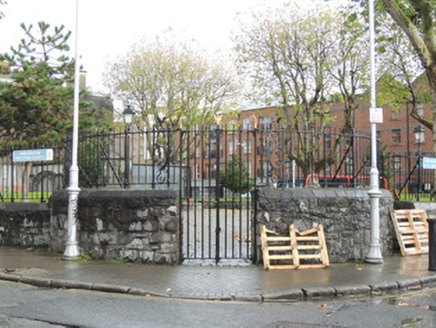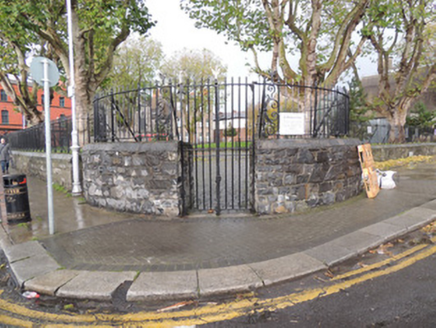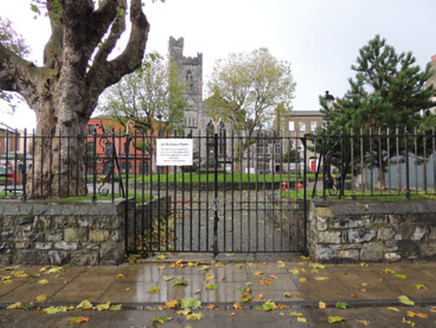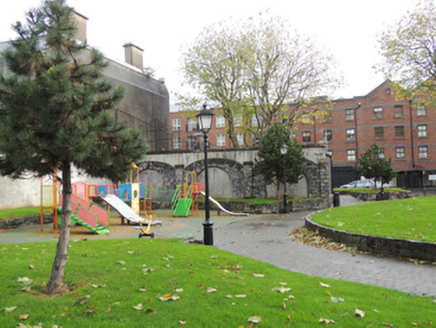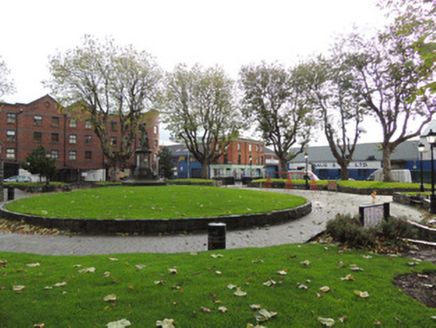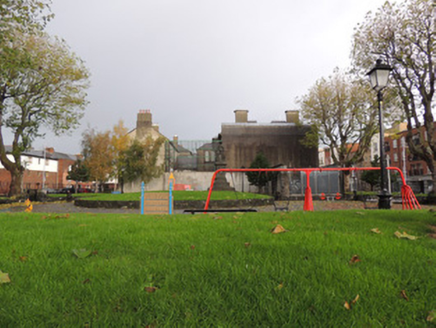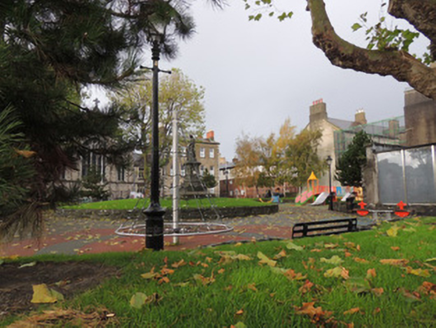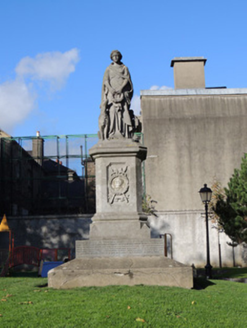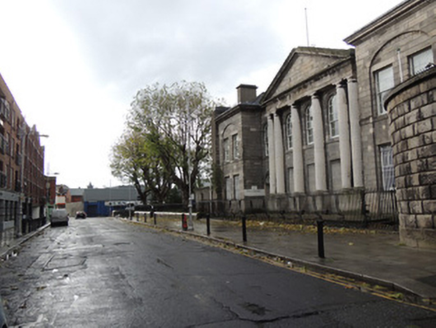Survey Data
Reg No
50070505
Rating
Regional
Categories of Special Interest
Artistic, Historical, Social
Previous Name
Newgate Prison
Original Use
Park
In Use As
Playground
Date
1780 - 1900
Coordinates
315206, 234612
Date Recorded
04/11/2012
Date Updated
--/--/--
Description
Public park, enclosed 1898, incorporating foundations of former Newgate Prison. Coursed rubble limestone plinth walls with cut limestone coping and spiked cast-iron railings to south, east, and west boundaries. Cement rendered boundary wall, shared with court house to north. Double-leaf cast-iron gates flanked by panels of scrolled cast-iron ornament to west and east elevations, and bowed corner bastions at south-west and south-east corners. Metal street name plaques to railings. Recent paving and lamp posts to interior. Elevated grass mounds to interior perimeter bounded by coursed limestone plinth walls, one with carved limestone monument. Handball alley in north-east corner, built c.1900, having recent perspex wall to south. Eight mature beech trees to interior of perimeter. Concrete paved paths to exterior with granite kerbstones. Stone setts to corner of Halston Street and Cuckoo Lane.
Appraisal
Saint Michan’s Park was one of the smaller parks constructed in Victorian Dublin, and was named after the Catholic church of Saint Michan (built 1811-14) immediately to its west. The park incorporates the foundations and bowed corner bastions of Newgate Prison, designed by Thomas Cooley and completed in 1781. The prison finally closed in 1863, from which time until its demolition in 1893 it was used as a fruit and vegetable market. Dublin Corporation reclaimed the space, creating a public park on the foundations of the prison, retaining about 3ft of its original walls, enclosing the park with cast-iron railings and gates, constructing a bandstand, seating, a handball alley and an ornamental drinking fountain. Many of the original features are visible on the Ordnance Survey map of 1907, yet only the railings, gates and handball alley survive. The Celtic Revival statue of Erin (erected 1903) is the central feature of the park. The park is of historical interest, commemorating historic nationalist figures and events at a very early date in Irish nationalist history. The survival of the handball alley is also significant as a sports and social amenity in this city centre park.
